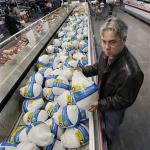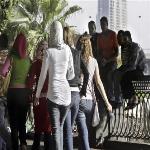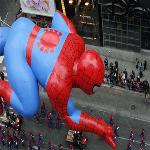This is the VOA Special English Agriculture Report.
这是美国之音慢速英语农业报道。
Recycling programs usually give new life to materials like paper, metal, plastic and glass. But a program in the eastern United States is recycling shellfish to help the Chesapeake Bay.
回收计划通常能赋予纸张、金属、塑料和玻璃一类材料新生命。但美国东部地区的一个计划是回收贝类以拯救切萨皮克湾。
Oysters are filter feeders which means they help clean the water. At the same time, generation upon generation of oysters form reefs. These structures provide homes for fish and crabs.
牡蛎是滤食动物,能帮助清洁水质。与此同时,一代又一代的牡蛎形成礁石为鱼、蟹提供栖身场所。
Oysters are a Chesapeake tradition. And they are good for the bay. But environmental damage and too much harvesting have cut the oyster population of the Chesapeake.
牡蛎是切萨皮湾一种有益的传统生物。但环境破坏和过度捕捞已经削减了切萨皮湾的牡蛎产量。
An organization called the Oyster Recovery Partnership started the recycling program earlier this year. Baby oysters need to attach themselves to a shell or other hard surface as they grow. Scientists are using recycled shells as part of an oyster reproduction program.
一个名为拯救牡蛎伙伴关系的组织今年早些时候开始实施这个回收计划。小牡蛎成长时需要附着在贝壳或其他坚硬表面上。科学家把回收贝壳作为牡蛎繁育项目的一部分。
More than fifty restaurants, seafood dealers and other businesses have joined the Oyster Shell Recycling Alliance. Two states, Maryland and Virginia, are also taking part in the program.
五十多家餐馆,海鲜经销商和其他企业加入了牡蛎壳回收联盟。马里兰州和弗吉尼亚州两个州也参与该计划。
One of the restaurants involved is in Washington, near the White House. Oysters are a specialty at the Old Ebbitt Grill, and manager Christian Guidi says that means lots of shells.
其中一家餐厅在华盛顿白宫附近。牡蛎是Old Ebbitt Grill餐厅的一大特色菜,餐厅经理克里斯琴·圭迪称,这意味着会产生大量贝壳。
CHRISTIAN GUIDI: "We serve between fifteen hundred and three thousand oysters a day, and that obviously does create a lot of waste."
圭迪:“我们每天消耗1500到3000只牡蛎,显然会产生大量的贝壳。”
But the restaurant no longer throws away all those shells. The Oyster Recovery Partnership takes them away for recycling.
但餐馆不再抛弃任何贝壳。拯救牡蛎伙伴关系组织将它们全部回收。
First the shells get washed. Then they go to the Center for Environmental Science at the University of Maryland for further processing.
贝壳首先被清洗干净,然后被送到马里兰大学环境科学中心做进一步处理。
The shells are placed in tanks with hundreds of millions of oyster larvae. This way, the baby oysters can be raised until they have grown big enough to be moved to the Chesapeake.
把贝壳放进装有数亿牡蛎苗的大量箱体中,这样,就可以提高小牡蛎产量,等到它们长到够大再把它们转移到切萨皮克湾。
This year, the Oyster Recovery Partnership helped produce and plant more than four hundred fifty million baby oysters in the bay.
今年,拯救牡蛎伙伴关系组织帮助切萨皮克湾孵育了超过4.5亿只小牡蛎。
Don Meritt heads the oyster recovery program at the University of Maryland. He says the goal is not just to increase the oyster population.
唐·梅里特是马里兰大学牡蛎拯救计划的主管。他称,该计划的目标不仅是提高牡蛎产量。
DON MERITT: "Our real goal here is to try to restore healthy oysters to the Chesapeake Bay so that we can help restore a healthy Chesapeake Bay. Not just a healthy oyster population, but a healthy bay."
梅里特:“我们的真正目标是尝试将健康牡蛎放回切萨皮克湾,以帮助重建一个健康的切萨皮克湾。不仅是牡蛎产量,还有海湾环境。”
Mr. Meritt says it will take many years of work before the Chesapeake Bay has a good supply of oysters again.
梅里特称,切萨皮克湾的牡蛎供给恢复正常还需要很多年的努力。
DON MERITT: "We did not get to this crisis in a few years and we are not going to get out of it in a few years. It is going to take a concerted effort over a long period of time."
梅里特:“我们不是在短短几年内陷入危机中,也无法在短短几年内走出这场危机。这需要我们长时间的共同努力。”










